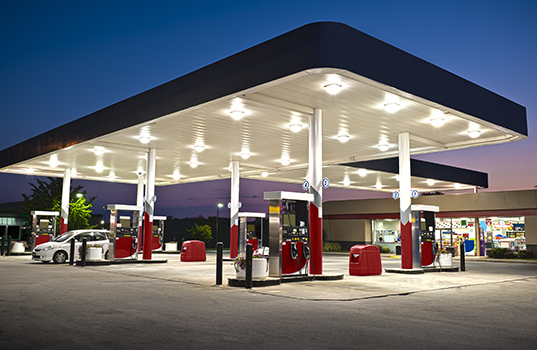By Gavin Bisdee, Zynstra, an NCR Company
Convenience stores have long been a staple in consumers’ worlds, providing the ultimate pitstop for road trips, last-minute items, a quick coffee break or meal. But unprecedented consumer expectations and shopping behaviors in the industry are putting pressure on c-stores to create new levels of consumer engagement and convenience.
As we move into 2020, innovative POS offerings will take center-stage at convenience stores – why? Just as consumers have responded favorably to the added convenience of easily purchasing items from their nearest c-store location while on the road, consumer expectations are presently fueling a demand for increased technology in c-stores to deliver the types of frictionless service they are experiencing in many other retail environments.
As such, in 2020, convenience stores will be looking to adapt their existing POS capabilities to deliver new levels of frictionless checkout and omnichannel convenience to consumers in order to compete.
Customer Expectations in 2020
Quick, effortless c-store shopping will continue to be key to customers in 2020. According to NACS, 45% of shoppers say they have entered and left convenience stores with a purchase in hand in under three minutes – highlighting an emphasis on checkout speed and wait times as a key consideration for consumers. In addition, 44% of convenience store shoppers answered that they would be interested in technologies that allow them to instantly pay and skip checkout lines. This, of course, includes self-checkout but customer trends are moving rapidly in other directions, such as favoring pay at the pump, pre-ordering food for ‘pick-up’ and home delivery.
The rise of third-party convenience store delivery services such as GoPuff, Uber Eats, DoorDash and GrubHub enables consumers to buy meals, snacks and additional items from their nearest convenience store online and have them delivered to their doorsteps. In fact, eMarketer predicts that U.S. food delivery app usage will surpass 44 million people in the US, reaching nearly 60 million by 2023.
The stakes are higher than ever, so flexible payment options are key, no time should be wasted once a shopper lands in the store. As other retailers strive to encroach on the growing convenience store market, c-store retailers cannot afford inconveniencing their on-the-go consumers with long wait times at the checkout. Today’s consumers demand a digitally enabled and efficient shopping experience, and c-store retailers must evolve with consumer demands to continue gaining market share and deliver on the promise of convenience. As such, the technology in place must be simple, fast and make a pitstop a true pitstop.
Offering More in 2020 With Improved POS Systems
According to our recent Convenience Stores Technology Insight Report, which surveyed c-store directors and IT managers from U.S. convenience store chains, c-store retailers believe POS technology will be the key to offering consumers an enhanced customer experience. Our respondents highlighted the top IT capabilities to support future business strategies and deliver higher levels of convenience:
- 38% home delivery capabilities
- 34% mobile pay at the pump
- 33% self-checkout
- 32% order online, pickup in-store
- 29% mobile payment apps
We can certainly expect these initiatives to become more prevalent across stores. However, they all require a flexible POS system and many stores are unfortunately burdened with aging systems that can impede new in-store technology.
Ineffective POS technology prevents retailers from rolling out new applications and services across their store demographic and driving improved performance and operational efficiency. Security is another key concern that will continue to be of the utmost importance in 2020. Support for legacy POS systems is fundamental to the maintenance of PCI-DSS compliance. Without it, POS terminals can’t access the latest updates and patches, exposing c-stores to much higher security and compliance risks.
To overcome these challenges, centralized management of stores through a software-defined store strategy will become a key tool retailers will implement in order to continue in-store innovation at a rapid pace and meet the demands of consumers. No longer will c-stores continue to add more devices on top of existing legacy infrastructure as they understand it will only add more complexity and higher maintenance costs.
Adopting a software-defined strategy means we are moving into a new era where c-stores will move away from a device orientated store infrastructure. This gives c-stores the ability to run the latest POS software on aging hardware or transition to thin client devices that are multi-functional and come with full peripheral (scanners, printers and more) integration. Improving staff productivity with store associates using a single multi-functional device that allows them to swipe the screen from POS to kitchen management system to many more applications is just one example and better still, it could be portable.
Increased M&A Activity
2019 saw more mergers and acquisitions, some large deals such as EG Group completing the acquisition of Cumberland Farms, and some smaller such as Par Mar Stores purchasing Mountaineer Mart and GPM acquiring 63 C-Stores from Riiser Fuels. In 2020, we can expect more marriages of convenience. As market leaders recognize there is an opportunity to scale further, many of the largest chains in the industry are looking for both tactical acquisitions and organic growth. However, the speed at which these deals can impact the bottom line is often down to the speed of technical integration. Having inflexible legacy infrastructure can hinder the time it takes to roll out new stores or integrate newly acquired stores. A software defined store infrastructure can improve the speed of new store integration by up to 50%, saving huge amounts of time and money.
Moving forward, the stakes will only get higher as consumers have more and more options to turn to so it’s up to the c-stores to respond. As such, in 2020, upgrading POS systems will be a key priority for c-store owners who want to deliver higher levels of convenience for their customers and evolve to a more flexible store infrastructure that can accommodate rapid change.
 Gavin Bisdee is the VP of global marketing at Zynstra, an NCR Company . He is responsible for marketing strategy and execution, focused on building brand and demand in the retail software market, and in communicating the unique value delivered by Zynstra solution to both partners and customers. Zynstra enables retailers to deliver superior customer and employee experiences through powerful software that optimizes existing store technology and enables digital transformation.
Gavin Bisdee is the VP of global marketing at Zynstra, an NCR Company . He is responsible for marketing strategy and execution, focused on building brand and demand in the retail software market, and in communicating the unique value delivered by Zynstra solution to both partners and customers. Zynstra enables retailers to deliver superior customer and employee experiences through powerful software that optimizes existing store technology and enables digital transformation.









